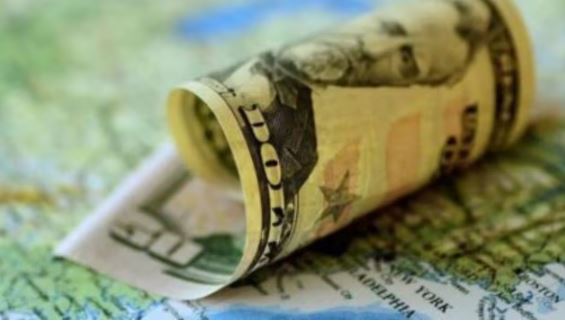Currency markets remained fragile but uncannily calm during Asian trading hours following a volatile 24 hours, in which the U.S. dollar reversed earlier steep losses against traditional safe-haven currencies. Investors appeared to pause and reassess the situation after a whirlwind of developments linked to escalating global trade tensions.
The Japanese yen and Swiss franc, long favored during times of uncertainty, hovered near six-month highs on Tuesday. The yen last traded at 147.325 per U.S. dollar, not far from Friday’s high of 144.82. Similarly, the Swiss franc was at 0.85665 per dollar, close to its own six-month peak touched in the previous session.
Despite its usual role as a safe haven, the U.S. dollar has shown signs of weakening amid rising fears that aggressive U.S. trade policies could dampen economic growth. The dollar’s traditional appeal has been undermined as markets increasingly price in the risk of a recession, driven largely by President Donald Trump’s sweeping tariffs on imports.
Global stock markets have plunged since Trump’s tariff announcement last week. Retaliatory moves by China and the European Union—who swiftly proposed counter-tariffs—fueled a deepening standoff, which Trump has threatened to escalate further.
As risk aversion surged, investors flocked to the yen and franc, seeking stability amid the turbulence. Meanwhile, the euro climbed 0.58% to $1.0967, approaching last week’s six-month high, and the British pound edged up 0.4% to $1.2776, rebounding from a one-month low hit in the previous session.
“The current market volatility is entirely driven by the Trump administration’s policy decisions,” said Nathan Lim, Chief Investment Officer at Lonsec Investment Solutions. “If those decisions are reversed, we can expect a reversal in market reactions as well.”
With concerns about a potential economic slowdown mounting, market participants are increasingly betting on a U.S. interest rate cut—possibly as soon as May. Expectations of further easing later this year are also growing, which would reduce the dollar’s yield advantage.
Reflecting the broader decline in the greenback, the dollar index—which tracks the U.S. currency against six major peers—fell 0.44% on Tuesday and is now down over 1% since the initial tariff announcement.
While businesses are worried about the fallout from the trade conflict, Chicago Federal Reserve President Austan Goolsbee emphasized that the central bank’s response would rely on “hard data.”
Still, some experts caution that monetary policy may have limited power in this situation. “I don’t see how aggressive rate cuts by the Fed would fix this,” said Kevin Gordon, Senior Investment Strategist at Charles Schwab. “Nor do I see where the kind of fiscal or monetary stimulus we typically get mid- or late-cycle would come from.”
Elsewhere, risk-sensitive currencies like the Australian and New Zealand dollars, which had slumped in recent days, saw a modest recovery. The Australian dollar rose 1% to $0.6052, though it remained close to a five-year low reached on Monday. The New Zealand dollar also climbed 1% to $0.5606 ahead of a central bank meeting on Wednesday, where a rate cut is widely expected.
China’s yuan slipped to its weakest level since 2023 after the central bank slightly relaxed its hold on the currency, a move analysts interpret as an attempt to support exports amid the deepening trade war.
In emerging markets, the Indonesian rupiah hit a record low after markets reopened following a public holiday, underscoring the wider impact of the global downturn.
James Athey, a fixed income manager at Marlborough, said that while there is still hope for a negotiated resolution to the tariff battle, the risks remain skewed to the downside. “How this ends will depend on tariff talks, key economic indicators, and central bank responses,” he said. “If we start to see underperformance in traditionally defensive equity sectors, that could signal a shift into full-blown ‘sell everything’ mode.”
(Source)
